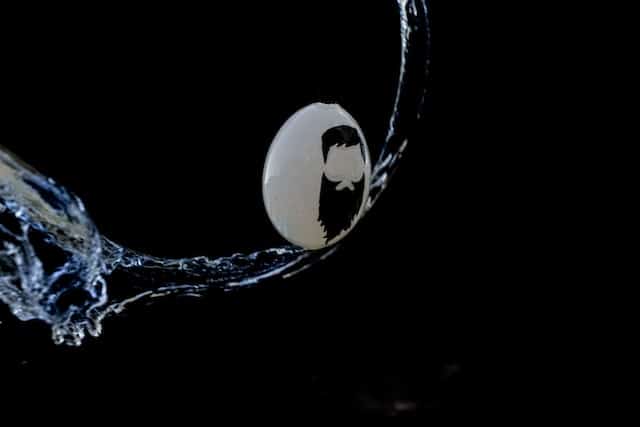
The warm water trick for hatching eggs is an easy and straightforward way of testing whether your eggs are close to being ready or not.
Contents
How Long Does a Chicken Egg Take to Hatch?
Most chicken eggs will hatch after 21 days (28 max!) of incubation. However, this time can vary depending on the breed of chicken and other factors such as humidity and temperature fluctuations during incubation.
In some cases, eggs that have been incubating for more than 21 days may still not have hatched yet, so you may need help determining if they are ready. That’s when the warm water trick comes into play.
Also see: How Much Do Baby Chicks Cost?
What Is the Warm Water Trick for Hatching Eggs?
The warm water trick is a simple test that uses warm water to check whether an egg is ready to hatch.
This technique involves carefully placing the egg into a bowl of lukewarm water and then observing how it behaves after about two minutes.
If the egg sinks, then it should be discarded as it is probably no longer viable; however, if it floats but slightly beneath the surface of the water, it means that there is still a live chick inside waiting to hatch out!
If it floats so that the egg protrudes above the water’s surface, it also means that the egg is no good, and you won’t get a hatchling out of it. This is because it’s had problems during development and has become dehydrated.
Related: Why Do Chickens Lay Unfertilized Eggs?
Careful!
Remember, there’s (hopefully) a developing chick inside the egg. Therefore it is vital to treat the egg with respect and care. Try not to move the egg too quickly. Try not to shake the egg or turn it around, up and down, unless you have to; the baby chick will get harmed or worse if you do!
Not Too Hot Or Cold!
Likewise, you don’t want the chick harmed by temperature extremes. You probably know personally how much of a shock to the system it is when you’re in a shower and the water suddenly turns hot or cold.
If you can keep the water temperature around 38ºF or 100ºF, that is ideal.
Not To Be Confused With The Fresh/Stale Float Test
It’s important to note that there exists another test called the “fresh/stale” float test, which isn’t intended for hatching eggs and should only be used with store-bought eggs before eating them.
This test involves placing eggs in a bowl filled with cool water; fresh eggs will sink while stale ones will float due to air pockets building up inside them over time. Therefore, make sure you don’t mistake one test for another when trying to determine whether your hatching eggs are ready.
Related: What To Feed Chickens So That They Lay More Eggs
A Similar Procedure with Warm Water To Help Eggs Hatch
While it is fairly easy to test whether an egg is stale/fresh or hatchable, it is not so easy to keep an egg warm with water to coax it into hatching.
The idea is to soak a towel with warm water and cradle the unhatched egg in the towel until it hatches.
Also, a warm incandescent bulb is suspended above the egg to keep the whole egg-hatching setup warm.
It’s a little more detailed than that, but you get the idea.
For more detail, check this site that focuses on pigeons.
Conclusion
Many factors can affect how long it takes for chicken eggs to hatch.
- The freshness of the egg.
- The temperature and humidity of the incubator.
- Whether or not the embryo has miscarried.
…are three factors that can play a role in determining how long it will take for your chicks to come into the world.
Remember, if you’re using the float test to determine if your eggs are still good to hatch, keep in mind that this does not consider any other potential issues, such as problems once the chick is out of the egg.
If you’re unsure about your eggs or incubator conditions, consult a professional before proceeding.
Photo by Moritz Kindler on Unsplash.

